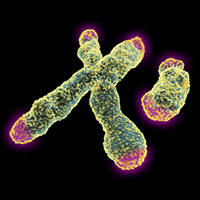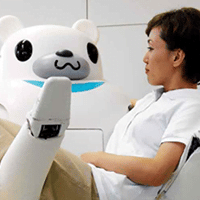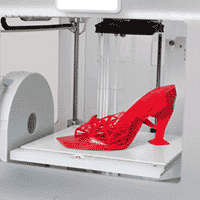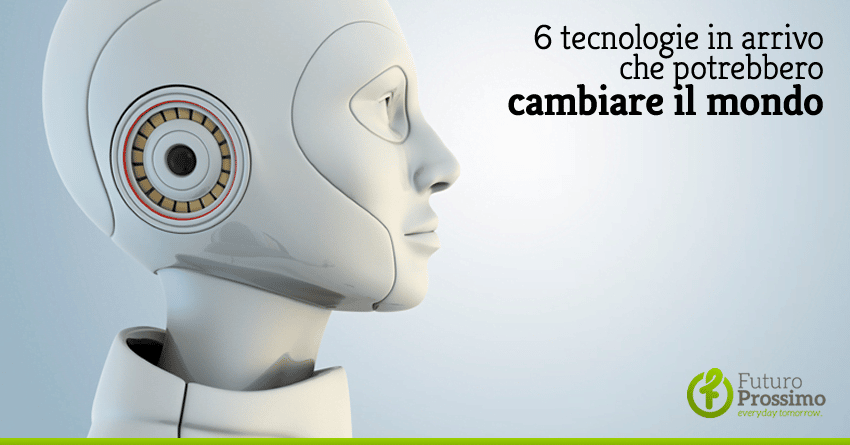The list of technologies under study is very long and is constantly updated: one of the latest lists of future developments that could change the world forever comes fromInstitute of Ethics and Emerging Technologies, a research center founded in 2004 by a philosopher, Nick Bostrom, and a bioethicist, James Huges. The list, drawn up with the consultancy of futurologist Gray Scott, presents really interesting elements: here are the "magnificent" 6 technologies that could arrive in the near future.

Age Reversal – By 2025, Scott writes, those with money and a strong sense of risk will be able to attempt therapies that aim to reverse age, through techniques based on the disabling of mitochondrial functions or other techniques currently tested on mice (which have produced a rejuvenation comparable to that of a 60-year-old man who is restored to the functions and health of a XNUMX-year-old). There are also other bodies (in the USA at Stanford, for example) that work on age reversal achieved through the lengthening of telomeres, the terminal areas of the chromosomes. In any case, these techniques do not eliminate several other causes of death such as cancer: for this reason the impact of this technology may be lower than hoped. It is not a therapy that gives immortality, it can extend life but does not make it invulnerable to dangers.

Mass artificial intelligence – In 2015, more than 200.000 industrial robots capable of performing more than one task will be sold. We will see them run in hotels, hospitals and restaurants by 2020. Just to stay in a hospital: which of the figures of nurses, nurses, cooks, therapists, cleaners will be replaced first? It takes much more, in my opinion. By 2025 we may have cars that can drive autonomously, but I think it is very premature to think of ubiquitous robots by that date.

Vertical LED Farms – By 2050, 75% of the world's population will live in cities or large megacities that have grown up around major world cities. The food and service needs of these large agglomerations will be frighteningly large. A model like the current one, based on large areas where food is grown which is then shipped long distances, may no longer be sustainable or sufficient for everyone. Vertical agriculture can allow great energy savings, reduce the number of pesticides and allow greater availability of zero-kilometer products. It could become widespread by 2025. The recent discovery that plants grow better under red and blue LED lights may lead to new devices that can improve production and reduce consumption. It is clear that without increasing agricultural production and improving the distribution system it will be impossible to feed more than 8 billion people by 2050. Within 10 years we could obtain up to 10% of total production from vertical farms.

Transhumanism – From intelligent objects to body implants of all types (teeth and vascular systems above all) there will be an ever-increasing fusion between man and machine. When not directly implanted in our body, technologies such as smart contact lenses, augmented reality glasses and others could send our smartphones into the attic and constitute totally different user experiences. In fact, several million "cyborgs" already live on the planet with small machines that replace bodily functions: the development of even more advanced technologies is only a consequence, and I would be surprised not to see any progress in this sense in the next 10 years.

Atmospheric water collection – Several companies are already studying and/or developing methods to obtain water from the air, mostly using micro filtration systems. The technology obviously works better when there is fog around, which makes us imagine its optimal application in desert territories not too far from the sea. Once made efficient enough, such a mechanism could become much cheaper than drilling. I have no idea how long it will take to see this technology applied: it already exists, but the doubt is about how to develop it on a large scale.

3D Printing – We've been talking about it for quite a while (in Italy the tirade by Beppe Grillo, misunderstood at the time, who introduced the topic is famous): this technology is becoming increasingly capable of providing large-scale applications. Fashion designers are already using 3D printers for their clothes, several companies print metal parts for vehicles and aircraft. We will soon see furniture and homes. Will we ever see printers that can print other printers? Beyond what might only appear to be a boutade, this is the technology that will be applied more than ever in recent years.
How many/which of these technologies will meet the requirements? All we have to do is wait...and monitor :)


